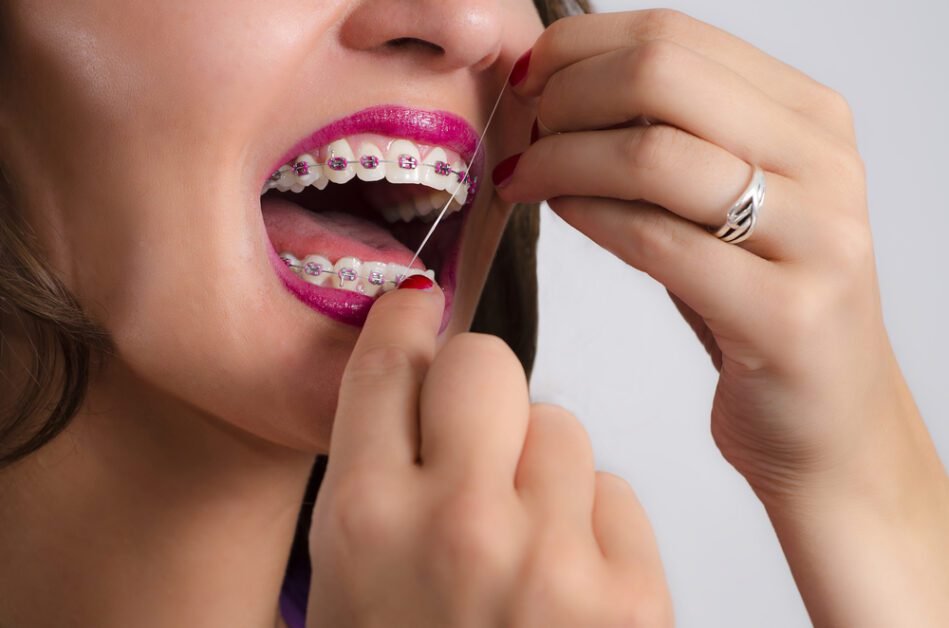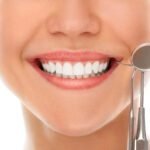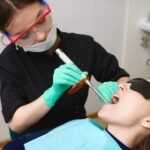Table of Contents
The Benefits of Flossing for Oral Health

Flossing is a crucial component of a comprehensive oral hygiene routine. By incorporating flossing into your daily dental care regimen, you can reap a multitude of benefits for your oral health. Flossing helps to remove plaque, a sticky film of bacteria that can accumulate between teeth and along the gumline. When left unchecked, plaque can lead to tooth decay, gum disease, and bad breath.
Moreover, flossing allows you to access areas that your toothbrush cannot reach effectively, ensuring a thorough cleaning of your teeth and gums. By eliminating plaque and debris through regular flossing, you can prevent the onset of cavities and maintain optimal oral health. Embracing this simple yet effective practice can make a significant difference in the long-term health of your teeth and gums.
The Role of Plaque in Tooth Decay
Plaque plays a crucial role in the development of tooth decay by acting as a breeding ground for harmful bacteria. When we consume sugary or starchy foods, these bacteria feed on the leftover particles in our mouth and produce acids that erode the enamel of our teeth. Over time, this erosion can lead to cavities and other dental issues if not properly addressed through good oral hygiene practices.
Furthermore, the bacteria in plaque can also trigger inflammation in the gums, leading to gum disease if left unchecked. This highlights the importance of regular brushing and flossing to remove plaque from the surfaces of our teeth and along the gumline. By understanding the detrimental impact of plaque on our oral health, we can better appreciate the significance of maintaining a consistent and thorough oral care routine to prevent tooth decay and gum disease.
How Flossing Helps Remove Plaque
Flossing plays a crucial role in removing plaque from areas of the mouth that are challenging to reach with a toothbrush alone. Plaque is a sticky, colorless film of bacteria that forms on teeth, especially along the gum line and between teeth. If not properly removed, plaque can harden into tartar, leading to tooth decay and gum disease. By flossing daily, individuals can effectively disrupt and remove plaque, helping to prevent these oral health issues.
When floss is gently maneuvered between teeth, it can reach areas that a toothbrush cannot access. This allows for the removal of food particles and plaque buildup, helping to prevent the formation of cavities and gum disease. Additionally, flossing can stimulate the gums, promoting good circulation and overall gum health. Incorporating flossing into a daily oral hygiene routine is essential for maintaining optimal oral health and preventing the harmful effects of plaque buildup.
Table
| Action | Effect |
|---|---|
| Reaches Tight Spaces | Flossing removes food particles and plaque from areas a toothbrush can’t reach, like tight gaps between teeth. |
| Reduces Bacteria | It removes bacteria that cause bad breath, which brushing alone may not eliminate. |
| Cleans Below the Gumline | Flossing removes plaque below the gumline, which can erode enamel and turn into tartar if not cleaned. |
| Prevents Cavities | By removing plaque, flossing reduces the risk of cavities forming on the teeth. |
| Improves Gum Health | Regular flossing can prevent sore, red, and swollen gums, reducing the likelihood of gingivitis and periodontitis. |
The Connection Between Gum Disease and Flossing
Gum disease, also known as periodontal disease, is a common oral health issue that can lead to serious consequences if left untreated. The connection between gum disease and flossing is significant, as flossing plays a crucial role in preventing and managing this condition. When plaque and tartar build up along the gumline, it can irritate the gums and lead to inflammation, bleeding, and eventually gum disease.
Regular flossing helps remove plaque from the areas between the teeth and along the gumline where toothbrushes cannot reach effectively. By incorporating flossing into your daily oral hygiene routine, you can reduce the risk of developing gum disease and maintain healthier gums. Flossing not only helps in preventing gum disease but also promotes overall oral health by reducing the likelihood of cavities and bad breath.
Proper Technique for Flossing

Flossing is a crucial aspect of maintaining optimal oral hygiene and preventing dental issues. To ensure that you are flossing effectively, start by using a piece of floss that is around 18 inches long. Gently wrap the floss around each tooth in a C shape and slide it up and down along the side of the tooth, reaching below the gumline. This technique helps remove plaque and food particles that can lead to decay and gum disease.
Proper technique also involves using a clean section of floss for each tooth to avoid transferring bacteria. Be gentle yet thorough to effectively clean between the teeth and along the gumline. Remember to floss at least once a day, ideally before brushing your teeth, to complement your oral health routine and keep your smile bright and healthy.
Choosing the Right Type of Floss
When it comes to maintaining optimal oral health, choosing the right type of floss is essential for effective plaque removal and gum care. There are various types of floss available, including waxed, unwaxed, tape, super floss, and even water flossers. Each type of floss has its own unique benefits and is suited to different individual needs, so it’s important to consider what works best for you.
Waxed floss is a popular choice because it slides easily between teeth, making it ideal for those with tightly spaced teeth or dental work like bridges. Unwaxed floss, on the other hand, is thinner and may be better for those with more space between their teeth. Tape floss is broader and flat, making it a great option for those who struggle with traditional floss. Super floss is designed with a stiff end to help thread it under dental appliances like braces or bridges.
Water flossers use a jet of water to clean between teeth and along the gum line, making them a good alternative for individuals with dexterity issues or sensitive gums. By choosing the right type of floss for your specific needs, you can ensure a more effective and comfortable oral hygiene routine.
Frequency of Flossing for Optimal Oral Health
Flossing is a crucial component of maintaining optimal oral health, and the frequency at which you do it plays a significant role in its effectiveness. The American Dental Association recommends flossing at least once a day to remove plaque and debris from between your teeth that your toothbrush may not reach. By making flossing a daily habit, you can help prevent gum disease, cavities, and other oral health issues.
Consistency in flossing is key to reaping its full benefits. Whether you choose to floss in the morning or evening, the important thing is to do it regularly. Some individuals may benefit from flossing more frequently, especially if they have certain risk factors for oral health problems. Remember, flossing complements brushing to provide comprehensive care for your teeth and gums, so make it a priority in your oral hygiene routine for a healthy smile.
Table
| Aspect | Recommendation |
|---|---|
| Frequency | Floss at least once a day to remove plaque and food particles that your toothbrush can’t reach. |
| Timing | The best time to floss is the time that fits comfortably into your schedule, whether it’s morning or night. |
| Technique | Use gentle motions to avoid damaging your teeth and gums; flossing too vigorously may cause harm. |
| Consistency | Daily flossing is key for preventing tooth decay, gum disease, and other oral health issues. |
| Alternatives | If traditional flossing is difficult, consider alternatives like water flossers or interdental brushes. |
Flossing as a Preventive Measure Against Cavities
Regular flossing is a crucial preventive measure against the development of cavities in the oral cavity. Cavities, also known as dental caries, are areas of tooth decay that can lead to pain and discomfort if left untreated. By flossing daily, individuals can effectively remove food particles and plaque from between their teeth, reducing the risk of cavity formation.
Plaque, a sticky film of bacteria that forms on teeth, can contribute to cavity formation by producing acids that erode tooth enamel. Flossing helps to remove plaque from areas that toothbrushes cannot reach, such as between teeth and along the gumline. By incorporating flossing into your daily oral hygiene routine, you can help prevent the accumulation of plaque and reduce your susceptibility to cavities.
Flossing for Fresh Breath
Flossing plays a crucial role in maintaining fresh breath by removing food particles and bacteria that can lead to bad breath. These particles can get trapped between teeth and along the gumline, creating an ideal environment for bacteria to thrive and produce foul-smelling odors. By flossing regularly, you can effectively clean these hard-to-reach areas, preventing the buildup of plaque and reducing the risk of halitosis.
In addition to preventing bad breath, flossing also contributes to overall oral health. Poor oral hygiene can result in gum disease, which is a common cause of bad breath. Flossing helps remove plaque, which is a sticky film of bacteria that can irritate the gums and lead to inflammation. By incorporating flossing into your daily oral care routine, you not only combat bad breath but also safeguard against more serious dental issues that can arise from neglecting proper oral hygiene.
Flossing and its Impact on Overall Health
Maintaining good oral hygiene goes beyond just keeping your teeth clean; it also plays a vital role in your overall health. Flossing, in particular, has a significant impact on preventing not only dental issues like cavities and gum disease but also on reducing the risk of systemic conditions such as heart disease and diabetes. Studies have shown a strong link between poor oral health, specifically gum disease, and various systemic diseases, highlighting the importance of incorporating flossing into your daily oral care routine.
By removing plaque and bacteria from between your teeth and along the gumline, flossing helps prevent inflammation and infection that can contribute to the development of gum disease. This, in turn, can help reduce the risk of inflammation spreading to other parts of the body and potentially leading to more severe health issues. Flossing acts as a proactive measure in protecting not just your oral health but also your overall well-being, underscoring the importance of this simple yet effective oral hygiene practice.
Common Misconceptions About Flossing
There are several common misconceptions about flossing that can lead to confusion regarding its importance in oral hygiene. One prevalent myth is that flossing is only necessary if food is visibly stuck between teeth. In reality, flossing is crucial for removing plaque and debris that toothbrushes may not reach, even when teeth appear clean.
Another misconception is that flossing is only beneficial for the spaces between teeth. While it is essential to clean these areas thoroughly, flossing also plays a significant role in maintaining gum health. By removing plaque along the gumline, flossing helps prevent gum disease and promotes overall oral health. It is important to understand that flossing is a vital component of a comprehensive oral care routine, not just a supplement to brushing.
The Link Between Flossing and Gum Health
Flossing plays a crucial role in maintaining optimal gum health. When plaque accumulates between teeth and along the gumline, it can lead to inflammation, known as gingivitis. Flossing helps to remove this plaque, preventing it from hardening into tartar and reducing the risk of gum disease. Healthy gums are essential for overall oral health, as they provide support for the teeth and help protect against infections that can spread throughout the body.
In addition to preventing gum disease, flossing also promotes better overall gum health by stimulating the tissues and increasing blood flow to the area. This stimulation can help strengthen the gums and reduce their sensitivity to irritants such as bacteria and food particles. By making flossing a regular part of your oral care routine, you can significantly improve the health of your gums and decrease the likelihood of developing more serious gum issues in the future.
Flossing for Those with Braces or Dental Implants
For individuals with braces or dental implants, flossing is crucial to maintaining good oral hygiene and preventing potential complications. Braces create additional nooks and crannies where food particles and plaque can get trapped, leading to a higher risk of tooth decay and gum disease. Therefore, it’s essential to use specialized orthodontic floss or a floss threader to effectively clean between the wires and brackets.
Dental implants, although artificial, still require proper care to avoid inflammation of the surrounding gums, known as peri-implantitis. Flossing around dental implants helps remove plaque buildup, reducing the risk of infection and ensuring the longevity of the implant. It’s recommended to use unwaxed tape floss or implant-specific brushes to gently clean around the implant without causing damage to the surrounding soft tissues.

The Importance of Consistency in Flossing Habits
Consistency in flossing habits is paramount for maintaining optimal oral health. Regular flossing helps to remove food particles and plaque from between teeth that brushing alone may not reach. Plaque accumulation can lead to gum disease and tooth decay if not properly removed, highlighting the importance of incorporating flossing into your daily oral hygiene routine.
By flossing daily, you can prevent the buildup of plaque, which is a sticky film of bacteria that can harden into tartar if left undisturbed. Consistent flossing not only helps to keep your teeth and gums healthy but also plays a significant role in preventing bad breath and reducing the risk of developing cavities. Making flossing a habit ensures that you are actively taking steps to safeguard your oral health in the long run.
Tips for Making Flossing a Regular Part of Your Oral Care Routine
To develop a consistent flossing routine, start by setting a designated time each day for flossing. Whether it’s before brushing in the morning or after dinner at night, establishing a specific flossing schedule can help make it a habit. Additionally, keeping your floss visible and easily accessible in your bathroom can serve as a visual reminder to floss regularly. Placing your floss next to your toothbrush can reinforce the importance of including flossing in your oral care routine.
Another tip for incorporating flossing into your daily habits is to track your progress. Consider using a flossing journal or app to monitor your flossing frequency. By visually seeing your commitment to flossing, you can stay motivated to continue this essential step in maintaining optimal oral health. Celebrate your successes along the way, no matter how small, to reinforce the positive behavior of flossing consistently.
Can flossing help prevent bad breath?
Yes, flossing removes food particles and bacteria that can cause bad breath, leading to fresher breath overall.
How often should I floss for optimal oral health?
It is recommended to floss at least once a day to effectively remove plaque and maintain healthy gums.
Is flossing only important for preventing cavities?
No, flossing is also crucial for preventing gum disease, which can lead to more serious oral health issues if left untreated.
Can flossing impact my overall health?
Yes, maintaining good oral hygiene, including flossing regularly, has been linked to lower risks of certain systemic diseases such as heart disease and diabetes.
Is flossing necessary for those with braces or dental implants?
Yes, it is important to floss regularly, using special tools if needed, to prevent plaque buildup and maintain the health of your gums and teeth while undergoing orthodontic treatment or having dental implants.
How can I make flossing a regular part of my oral care routine?
Some tips for incorporating flossing into your daily routine include setting a specific time each day to floss, keeping floss easily accessible, and finding a flossing method that works best for you, whether it’s traditional floss, floss picks, or a water flosser.




